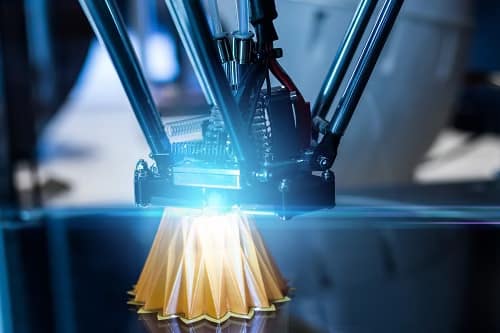Imagine being able to create complex industrial components layer by layer, cutting production time and costs while boosting design flexibility. This isn’t science fiction—it’s the reality of 三维打印 in modern manufacturing. But how is 三维打印 reshaping industries, and why should manufacturers take notice?
什么是 三维打印?
Also known as additive manufacturing, 三维打印 is a process where material is deposited layer by layer to build a three-dimensional object from a digital design. Unlike traditional subtractive manufacturing methods, which carve out material from a solid block, 三维打印 adds material exactly where needed, reducing waste and enabling intricate designs.
How Does 3D Printing Work?
"(《世界人权宣言》) 三维打印 process starts with a digital file, typically designed using CAD (Computer-Aided Design) software. The printer reads this file and deposits materials—such as plastics, metals, or ceramics—layer by layer until the final object takes shape. Common 三维打印 techniques include:
- 熔融沉积建模(FDM): Melts and extrudes thermoplastic filaments.
- 选择性激光烧结(SLS): Uses lasers to fuse powdered materials.
- 立体光刻(SLA): Cures liquid resin with ultraviolet light for high precision.
Benefits of 3D Printing in Manufacturing
- Design Flexibility: Allows for complex geometries impossible with traditional manufacturing.
- 快速原型制作: Speeds up the development cycle by quickly producing prototypes.
- Cost-Effective Production: Reduces material waste and lowers production costs for small batches.
- 定制: Enables tailor-made products without the need for expensive molds.
- Reduced Lead Times: Faster turnaround from design to finished product.
Industrial Applications of 3D Printing
三维打印 is no longer limited to prototypes; it’s actively used in full-scale production:
- 航空航天: Lightweight, high-strength parts for aircraft and spacecraft.
- Healthcare: Custom prosthetics, dental implants, and surgical tools.
- 汽车: Rapid prototyping for design validation and custom parts production.
- 建筑: Large-scale 三维打印 for building components and housing structures.
Challenges of 3D Printing
While 三维打印 offers many advantages, there are still hurdles to overcome:
- Material Limitations: Not all materials are suitable for 三维打印.
- Production Speed: Slower than traditional manufacturing for high-volume production.
- Post-Processing Requirements: Often requires additional finishing for aesthetic or functional purposes.
- Cost of High-End Printers: Industrial-grade 三维打印 machines can be expensive.
The Future of 3D Printing
The future of 三维打印 is incredibly promising. Innovations like multi-material printing, faster print speeds, and improved material diversity are pushing boundaries. Emerging technologies such as bioprinting and metal 三维打印 are also set to revolutionize industries like healthcare and aerospace.

最终想法
三维打印 is no longer just a prototyping tool—it’s a game-changing force in modern manufacturing. For businesses looking to stay competitive, integrating 三维打印 into their production process offers a clear path toward innovation, efficiency, and customization. The future of manufacturing is being printed, one layer at a time.